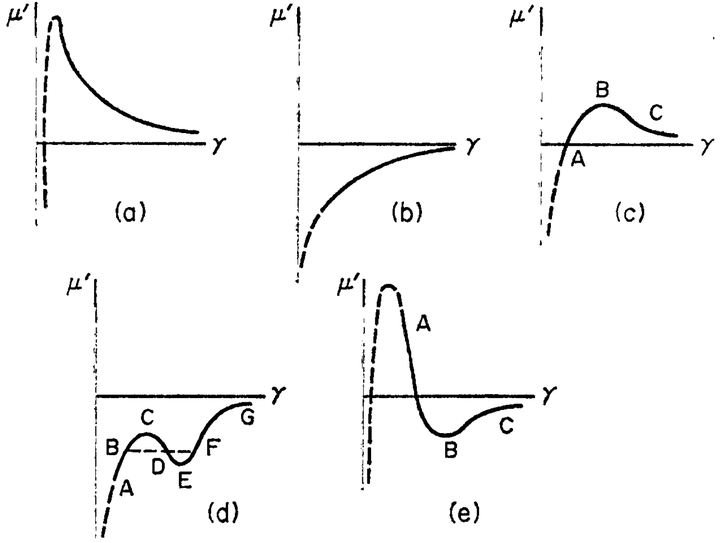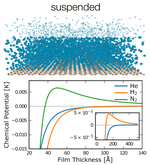Graphene Films
 Wetting Diagrammatic representations of the dependence of adsorbate chemical potential $\mu^'$ on surface concentration $\gamma$ (proportional to film thickness) for typical wetting cases as described by Landau and Lifshitz in Statistical Physics Part 1.
Wetting Diagrammatic representations of the dependence of adsorbate chemical potential $\mu^'$ on surface concentration $\gamma$ (proportional to film thickness) for typical wetting cases as described by Landau and Lifshitz in Statistical Physics Part 1.A doorway to a complicated case for wetting posed as a theoretical curiosity by Landau and Lifshitz has been opened. Extension of Dzyaloshinskii–Lifshitz–Pitaevskii (DLP) theory to include the polarization of quasi-two-dimensional materials in a layered dielectric sandwich enables characterization of a class of critical wetting phenomena where film growth is arrested. When these materials are suspended in a geometry where only one side is able to wet (much like a drum left in the rain), film growth occurs to a critical finite thickness. Chemical doping, choice of material, and even mechanical strain influence the overall wetting behavior. Interesting research opportunities arise while studying these wetting phase transitions. Can this wetting phenomena be modified to create surface instabilities analogous to spinodal dewetting? Do technological implications exist for these universal phenomena such as another route to the self-assembled patterned surfaces or customizable ultra-thin films?
